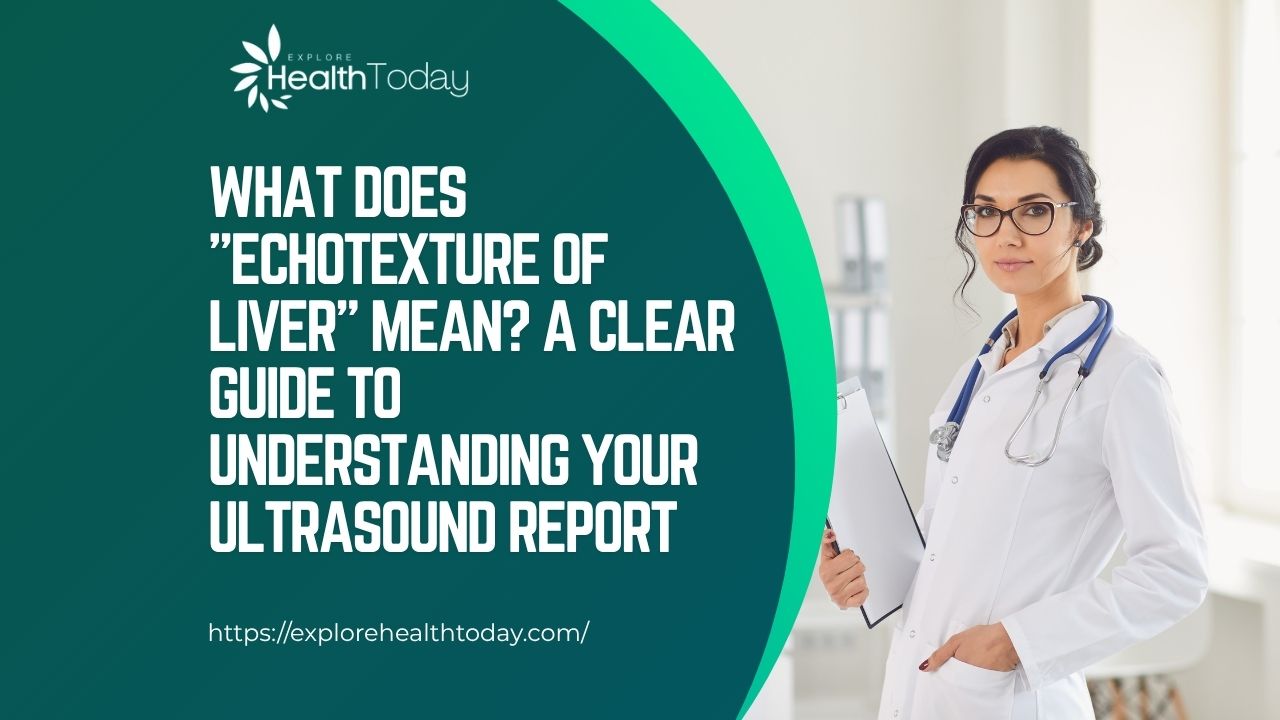When you get an abdominal ultrasound and read the phrase “echotexture of liver” in your results, it might leave you scratching your head. It sounds technical—and it is—but it’s also an important piece of the puzzle in evaluating liver health.
This blog post breaks down what liver echotexture means, how it’s assessed, and what variations could signal about your health. Whether you’re undergoing screening for fatty liver, cirrhosis, or unexplained symptoms like fatigue or abdominal pain, understanding this term can empower you to ask better questions and seek proper follow-up care.
What Is the Echotexture of Liver?
The echotexture of the liver refers to how the liver appears on an ultrasound scan, based on how sound waves bounce off the liver tissues. Think of it as the liver’s “acoustic fingerprint.” A healthy liver has a homogeneous (uniform) echotexture, meaning the tissue appears smooth and consistent throughout.
When the liver has abnormal echotexture, it may indicate:
- Fatty infiltration (steatosis)
- Fibrosis or scarring
- Cirrhosis
- Hepatitis
- Tumors or lesions
Why Is Echotexture Important?
Changes in the echotexture can be one of the earliest signs of liver disease, even before symptoms show up. It’s especially helpful for catching conditions like non-alcoholic fatty liver disease (NAFLD), which is now one of the most common chronic liver conditions in the U.S.
Key Functions of Liver Ultrasound and Echotexture Assessment
- Identify liver fat (steatosis)
- Detect liver stiffness (early fibrosis)
- Spot focal lesions (tumors, cysts, or nodules)
- Monitor chronic liver conditions
According to the Centers for Disease Control and Prevention (CDC), liver disease is among the top 10 leading causes of death in the U.S., and early imaging plays a vital role in management.
Understanding Normal vs. Abnormal Echotexture
Normal Echotexture
- Appears uniform and smooth
- Slightly hyperechoic (brighter) compared to the kidney
- No nodules or coarse areas
Common Abnormalities
1. Increased Echogenicity
This means the liver reflects more ultrasound waves than normal and appears brighter. Often associated with:
- Fatty liver disease
- Early fibrosis
2. Heterogeneous Echotexture
Non-uniform appearance with patchy or coarse patterns may indicate:
- Cirrhosis
- Chronic hepatitis
- Advanced fibrosis
3. Nodular Echotexture
A nodular liver suggests advanced scarring and regeneration, often seen in:
- End-stage liver disease
- Cirrhotic liver
What Causes Changes in Liver Echotexture?
There are several reasons your liver’s echotexture might change. Some of the most common include:
Non-Alcoholic Fatty Liver Disease (NAFLD)
Affecting nearly 1 in 4 U.S. adults, NAFLD occurs when fat builds up in the liver in people who drink little or no alcohol. It’s often linked with obesity, insulin resistance, and metabolic syndrome. Learn more from the National Institute of Diabetes and Digestive and Kidney Diseases (NIDDK).
Alcohol-Related Liver Disease
Chronic alcohol use can lead to fatty infiltration, inflammation (alcoholic hepatitis), and cirrhosis. An ultrasound can detect these changes early through altered echotexture.
Chronic Hepatitis
Long-term viral infections like hepatitis B or C can lead to inflammation and fibrosis, changing the liver’s appearance. The CDC continues to recommend screening for hepatitis C for all adults born between 1945–1965 and those with risk factors.
Cirrhosis
The end stage of many chronic liver diseases. Cirrhotic livers have a coarse, nodular echotexture and are often smaller in size with irregular surfaces.
Diagnostic Process: How Is Echotexture Evaluated?
Liver Ultrasound
Ultrasound is a non-invasive, widely available, and cost-effective tool to evaluate liver structure.
Key features assessed:
- Liver size and shape
- Echotexture (uniform, coarse, or nodular)
- Presence of lesions or masses
- Portal vein size and flow (to assess for portal hypertension)
Additional Tests
Depending on the ultrasound results, your provider may order:
- FibroScan (transient elastography) – measures liver stiffness
- CT or MRI scans – for more detailed imaging
- Blood tests – liver enzymes, viral hepatitis markers
- Liver biopsy – in uncertain or complex cases
U.S. Trends in Liver Health (2024–2025)
- The U.S. obesity rate remains a key driver of rising liver issues. As of 2024, over 42% of adults are classified as obese, contributing to rising cases of NAFLD and liver fibrosis.
- Medicare and commercial insurance plans now more frequently cover FibroScan and abdominal ultrasounds for at-risk populations, signaling increased focus on liver disease screening.
- Telehealth and AI-assisted radiology are helping more Americans in rural areas access early liver health diagnostics.
What Should You Do If Your Liver Echotexture Is Abnormal?
If your report notes an abnormal echotexture:
- Don’t panic. It doesn’t always mean advanced disease.
- Schedule a follow-up with your primary care doctor or a hepatologist.
- Review lifestyle factors – diet, alcohol use, exercise, and medications.
- Ask about additional tests if needed for diagnosis or monitoring.
- Follow a liver-friendly lifestyle:
- Limit alcohol
- Eat a whole-food, anti-inflammatory diet
- Maintain a healthy weight
- Stay physically active
- Limit alcohol
Frequently Asked Questions
Can liver echotexture improve?
Yes. If changes are due to fatty liver or early fibrosis, lifestyle modifications like weight loss, healthier eating, and reducing alcohol can improve liver health—and in some cases, reverse damage.
Is ultrasound always accurate?
While helpful, ultrasound has limitations. It’s operator-dependent and may not detect subtle changes. Your provider might use it alongside other tools like MRI or FibroScan for a complete picture.
Is abnormal echotexture the same as liver disease?
Not necessarily. It could be a warning sign or a marker of an existing condition. Only with additional clinical correlation can a diagnosis be confirmed.
If your ultrasound mentions changes in the echotexture of liver, don’t ignore it. Early detection is your best defense against liver disease. Schedule a comprehensive liver health evaluation with your healthcare provider today.
About ExploreHealthToday.com
ExploreHealthToday.com was created to be a one-stop resource where readers can find up-to-date, well-researched articles on a variety of health topics. From nutrition and wellness to lifestyle and mental health, we strive to provide reliable information to help you make informed decisions about your well-being.We believe that good health starts with good information, and our mission is to empower our readers with knowledge they can trust.
Visit us at ExploreHealthToday.com to learn more.





